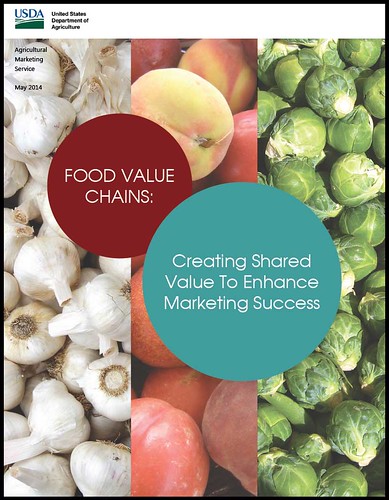
A recent trip back home to Louisiana sparked memories of a simpler time when old trucks full of fresh produce rumbled down dusty roads to deliver goods to the local market. The 2012 Census of Agriculture tells us that 50,000 farmers and ranchers nationwide are now selling to local retailers and that 150,000 of them are selling their products directly to consumers. Although these farmers and ranchers are still using this direct approach, the agricultural industry is certainly more dynamic today. This means that producers need to follow a strategic business model.
The reality is that food can go through a lot of steps to reach the consumer. Before it is served on the table, food travels from the field to the truck to the packing house to the store. My agency, the USDA’s Agricultural Marketing Service (AMS), has many programs that support business entities involved in the food chain, including farmers markets and food hubs. For example, we invest in projects that help farmers and businesses understand emerging trends, create new markets, and stimulate our nation’s rural economies.
One strategic business model with documented success is known as a food value chain. In this model, a commitment to transparency, working together and providing fair returns to all partners is combined with a shared focus on producing and delivering food with attached environmental or social values. These business arrangements appeal to a growing number of today’s consumers who want to know the story behind their food and want to support businesses with a social consciousness.
Besides seeking fresh, flavorful and healthy food, many consumers want that food to deliver better returns to farmers, be grown sustainably and be sourced locally. Responding to the needs of these customers through strategic collaboration creates greater efficiency and profitability among food producers and distributors. It also translates to customer satisfaction.
In support of agribusiness professionals, community planners, and researchers who are strategizing for a new way to market and deliver agricultural products, AMS and the Wallace Center of Winrock International, recently produced a new report, Food Value Chains: Creating Shared Value to Enhance Marketing Success. The report provides an overview of how food value chains are initiated, structured, how they function and the business advantages and challenges of this approach.
Case studies in the report demonstrate the success shared by all the partners and the importance of using producer identity to build trust and loyalty among consumers. For example, an alliance between 100 Missouri and Kansas City farmers with a regional grocery chain formed Good Natured Family Farms (GNFF). Pooling their products under one local brand enabled participants to sell their products in 28 grocery chain stores across the region. Their brand communicated to consumers that GNFF partners share common values in how these products got to their table. As partners, GNFF producers were able to troubleshoot and collaborate to manage logistical challenges, all while optimizing their outreach and responsiveness to consumers. This highly successful collaboration resulted in $3 million in sales for GNFF in 2011.
AMS understands that our stakeholders are always looking for new ways to improve the way they do business, and we are excited to provide them with this new report as a valuable tool. USDA continues to coordinate its support for local and regional food systems through the Know Your Farmer, Know Your Food initiative. These efforts strengthen our communities and improve access to fresh, high quality products for millions of Americans.

